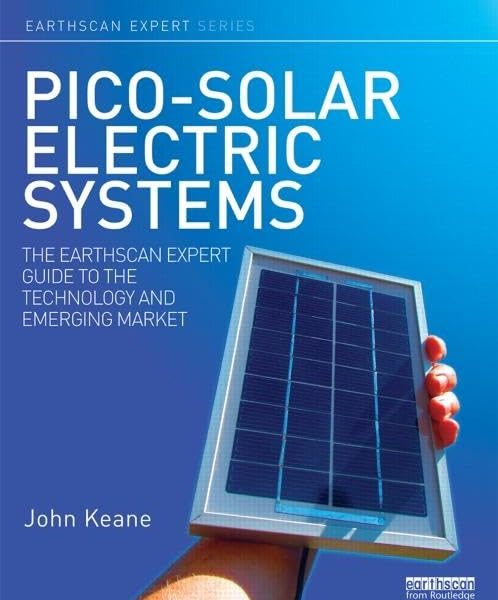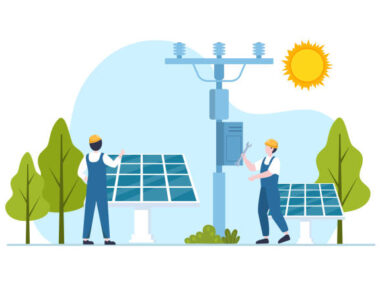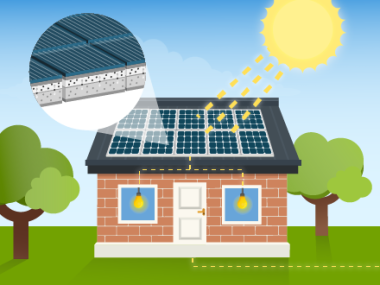- Many of us are familiar with the sight of expansive photovoltaic solar panels adorning rooftops or arranged in fields, generating substantial amounts of electricity at no cost. However, another type of solar energy has begun to gain traction, known as a pico solar system or pico PV for short. This technology employs small, compact, and lightweight solar photovoltaic panels to produce just a few watts of power, suitable for a diverse array of small and portable applications.
Pico solar systems: are compact solar energy setups tailored to meet the fundamental electricity requirements in off-grid or underdeveloped regions, often found in rural or isolated locales. These systems are known for their modest power output and straightforward design, making them well-suited for operating small appliances such as LED lights, mobile phones, radios, and other similar devices.
The term “pico” denotes the smallest scale of solar power systems, typically generating between a few watts up to approximately 50 watts. These setups commonly comprise a photovoltaic (PV) panel, a battery for storing energy, and basic control electronics. They are designed to be portable, easy to set up, and entail minimal upkeep, rendering them accessible and practical for communities lacking access to centralized electricity grids.
Pico solar systems play a pivotal role in enhancing energy accessibility in regions where traditional electricity infrastructure is either absent or unreliable. They have the potential to contribute significantly to poverty alleviation, education, healthcare, and economic advancement by facilitating access to essential lighting, communication, and productive energy applications.
A typical pico solar power system generates relatively modest and safe electricity, typically around 5 volts, earning it the endearing moniker “pico power.” Despite the low electrical energy output, Pico Solar Chargers remain highly beneficial for travelers or individuals lacking access to mains-powered chargers.
While traditional solar photovoltaic systems for residential power are gaining popularity, their widespread adoption is hindered by installation costs. Conversely, pico solar systems offer a more affordable alternative, making them accessible to a broader population without specialized installation requirements.
Pico solar systems vary in size and shape but typically consist of:
- A pico PV solar module, usually less than 20 watts-peak, to capture sunlight for electricity generation.
- Rechargeable batteries, typically under 12 volts, for storing solar power.
- Charge control and battery management circuitry to safeguard against overcharging or deep discharging.
- Power plugs and cables for connecting and powering devices like phones, tablets, and external lights.
- Internal lighting, often incorporating highly efficient LED lights.
While portable pico solar chargers for devices are popular, there’s a growing demand for pico solar lighting for homes and gardens. Off-grid solar lanterns, powered by pico PV panels and efficient LEDs, can illuminate entire garden areas at night.
The evolution of LED technology is contributing to the advancement of pico solar lighting, with improvements in storage batteries and solar panels further enhancing efficiency and affordability.
The proliferation of small, low-power devices like smartphones and tablets has expanded the scope of devices that pico solar systems can power. Many portable devices now integrate solar modules and rechargeable batteries, allowing them to be recharged using pico solar systems.
Devices intended for use with pico solar systems must consume minimal electrical power and operate with lower DC voltages, as pico solar systems generate DC electricity directly.
USB connections have facilitated the recharging of devices using pico solar systems, with many devices operating on 5 volts and consuming less than 1000mA of current. Devices requiring substantial power are better suited to mains or larger solar power systems.
Types of Pico solar systems:
Pico solar systems are available in diverse configurations, each tailored to specific applications and requirements. Here are some typical varieties:
- Foundational Pico Solar Kits: These kits typically feature a small solar panel, a rechargeable battery, LED lights, and occasionally a USB port for charging small electronics. They’re crafted to address fundamental lighting and charging necessities in areas lacking access to conventional power grids.
- Portable Pico Solar Chargers: These compact chargers are devised to replenish small electronic devices like smartphones, tablets, or portable speakers using solar energy. Their lightweight and often collapsible design make them well-suited for outdoor pursuits or travel.
- Pico Solar Lanterns: Illuminating indoor or outdoor spaces, these lanterns operate on pico solar systems, usually equipped with built-in LEDs and rechargeable batteries. They offer a sustainable and transportable lighting solution for households without grid connectivity or outdoor environments.
- Pico Solar Home Systems (PSHS): Slightly larger and more comprehensive, these systems are engineered to power multiple lights, mobile phones, radios, and small appliances in off-grid residences or small-scale enterprises. They typically encompass a larger solar panel, multiple lighting units, a sizeable battery, and sometimes added features like a radio or fan.
- Pico Solar Water Pumps: Utilizing solar power, these systems drive small water pumps for purposes such as irrigation, livestock watering, or domestic water supply in remote regions. They’re frequently deployed in agricultural or rural contexts where traditional power sources are unavailable.
- Pico Solar Street Lights: Designed for areas lacking reliable grid electricity, these solar-powered street lights integrate solar panels, LED lights, batteries, and occasionally motion sensors to efficiently illuminate streets, pathways, or public areas.
- Educational Pico Solar Kits: Intended for educational use, these kits facilitate learning about solar energy and basic electrical principles. They often include instructional materials and components for constructing simple solar-powered gadgets or toys, engaging students in hands-on exploration.
- These examples represent a selection of the pico solar systems available, each serving distinct purposes and accommodating various energy requirements in off-grid or under-electrified regions.










